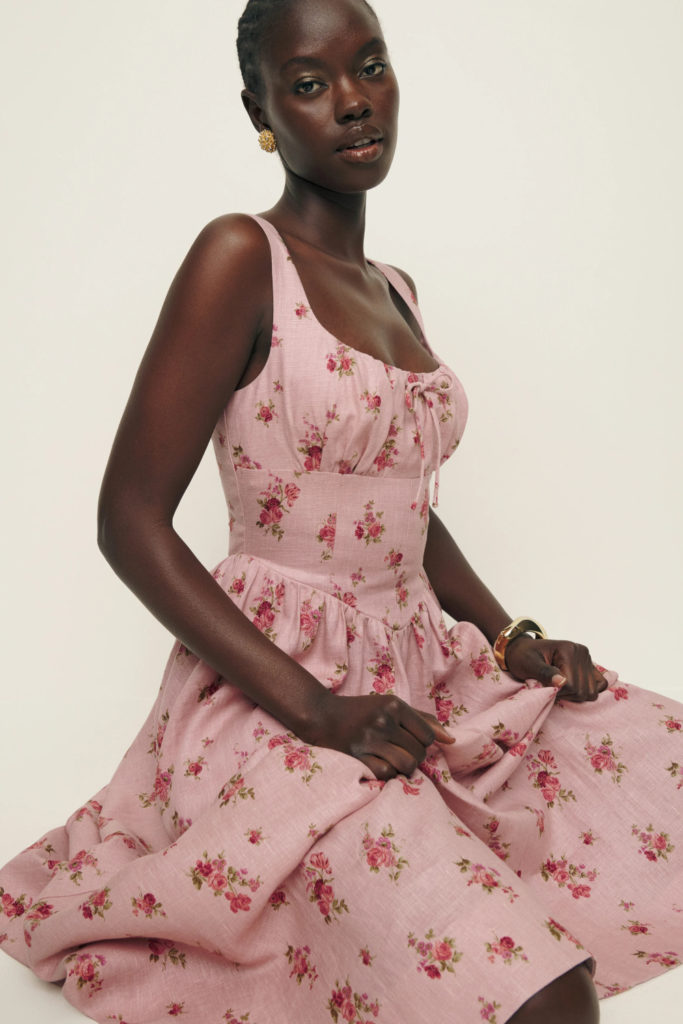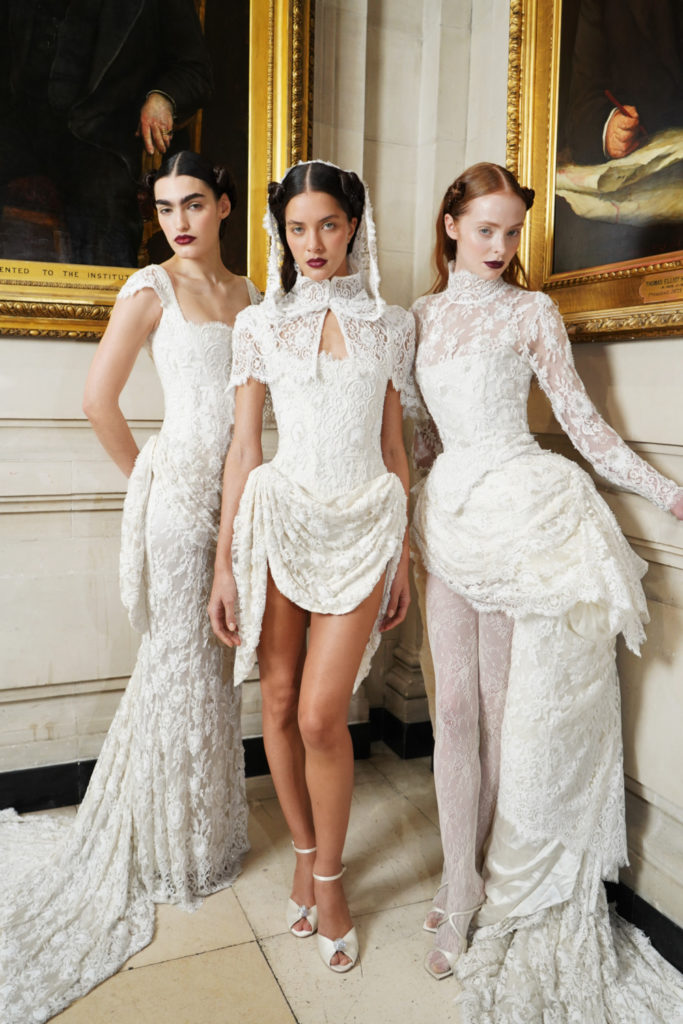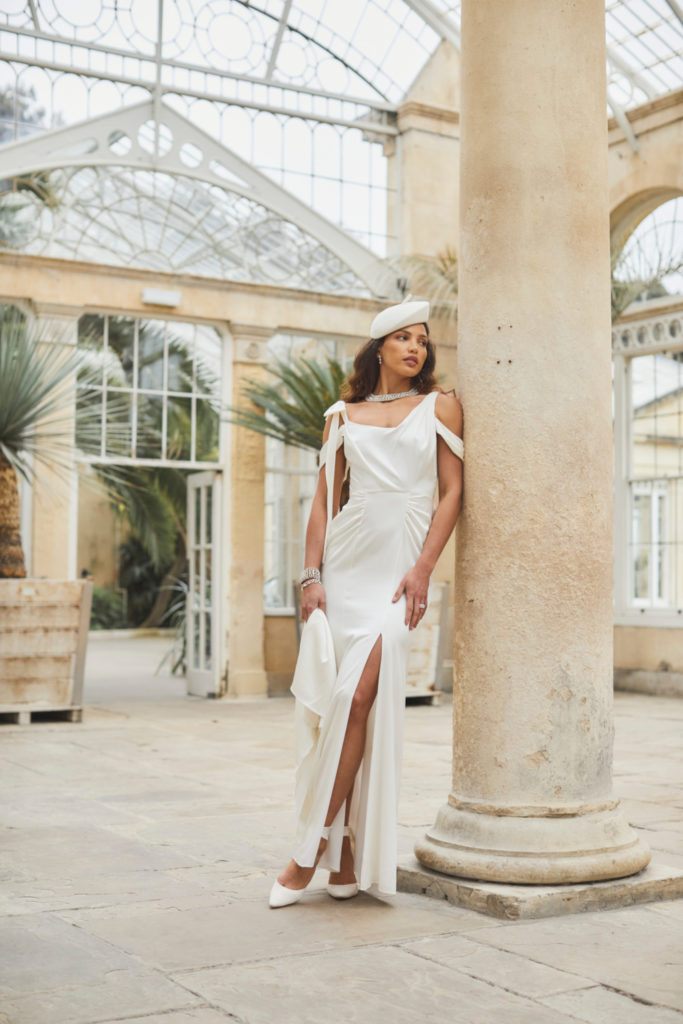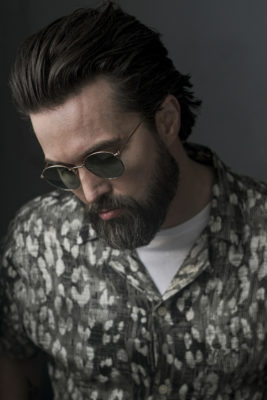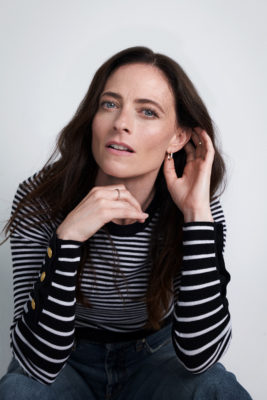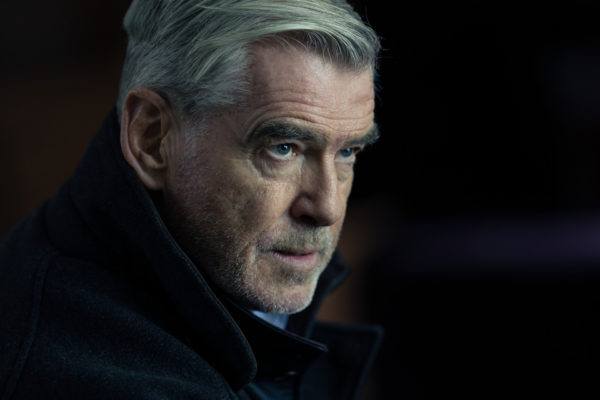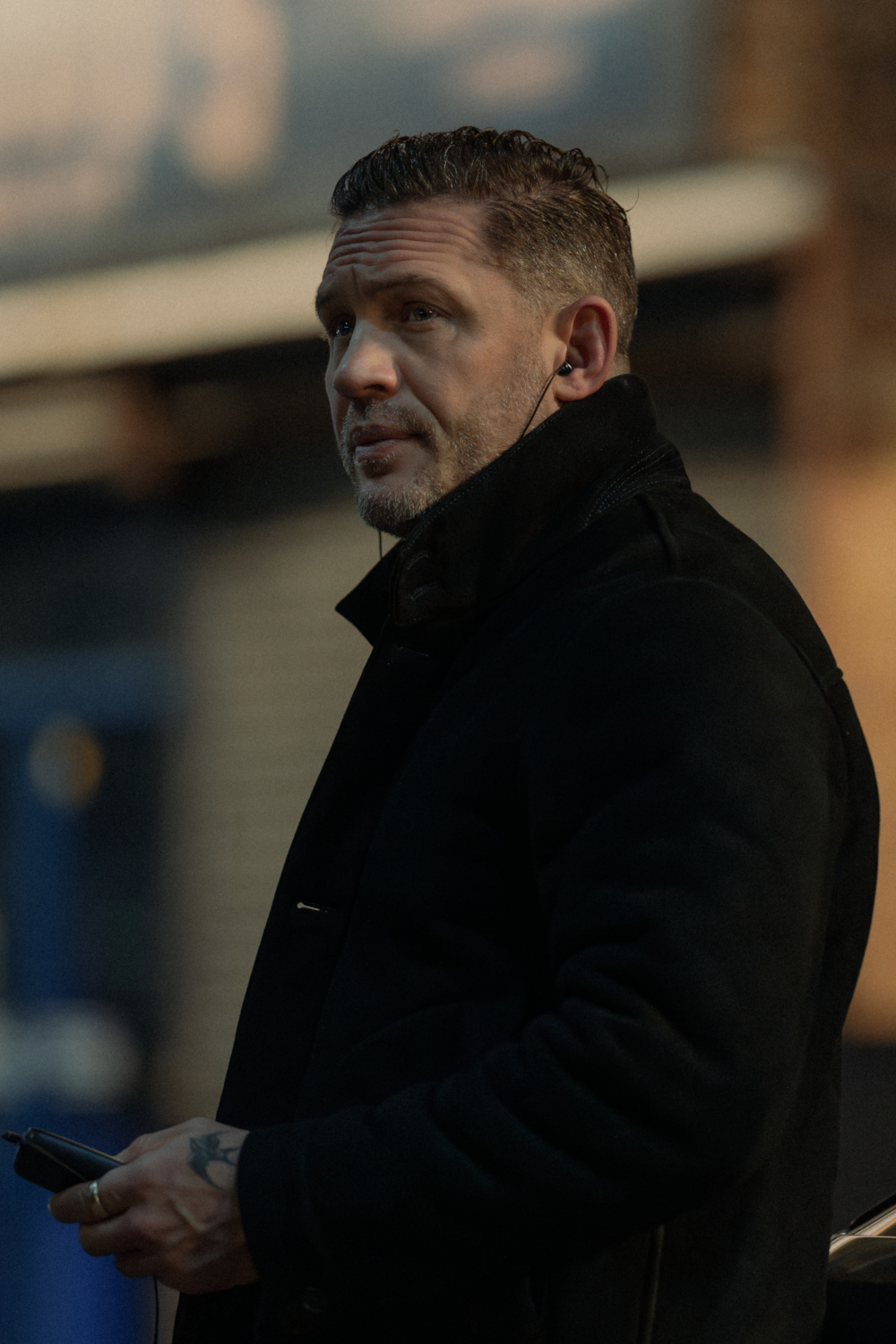
Crafting A Crime Syndicate: Rebecca Hale On Designing Costumes For MobLand
By
1 day ago
We sit down with MobLand's costume designer, Rebecca Hale, to talk London gangs, countryside brands and 'mood boxes'
With a plot rooted in London gang warfare, direction from industry heavyweight Guy Ritchie and a cast consisting of Pierce Brosnan, Tom Hardy and Helen Mirren, MobLand was always going to be a hit. The show, which follows a UK-based organised crime family fighting for power in a global crime syndicate, is now holds the title of Paramount+’s biggest global series launch week ever, joining the likes of 1923 and Landman as the streamer’s top three launches to date. But behind MobLand‘s tensely thrilling storyline is a wardrobe department filled with Ralph Lauren suits, Barbour jackets and Hublot watches – all of which have been carefully curated by costume designer Rebecca Hale.
As MobLand‘s story continues to unfold onscreen, we catch up with Hale to talk about her experience working on the show.
Rebecca Hale On Crafting Costumes For MobLand
Hi Rebecca, can you kick us off by telling us a bit about MobLand?
It’s a new Guy Ritchie show about a family of Irish gangsters working in London, and their ‘fixer’ who acts as their conciliary in personal and business matters. It’s less like The Gentlemen or Top Boy; it’s more like Guy’s earlier films, like Revolver. There’s gang warfare and loyalty and deception – and all that comes with those things.
And how did it differ from other projects you’ve worked on in recent years?
So different! Before this I worked on Kaos, a Netflix show about the Greek gods, and Fate, another Netflix series about teen fairies. You could say MobLand was also quite stylised in a sense, but it was very much grounded in everyday culture.
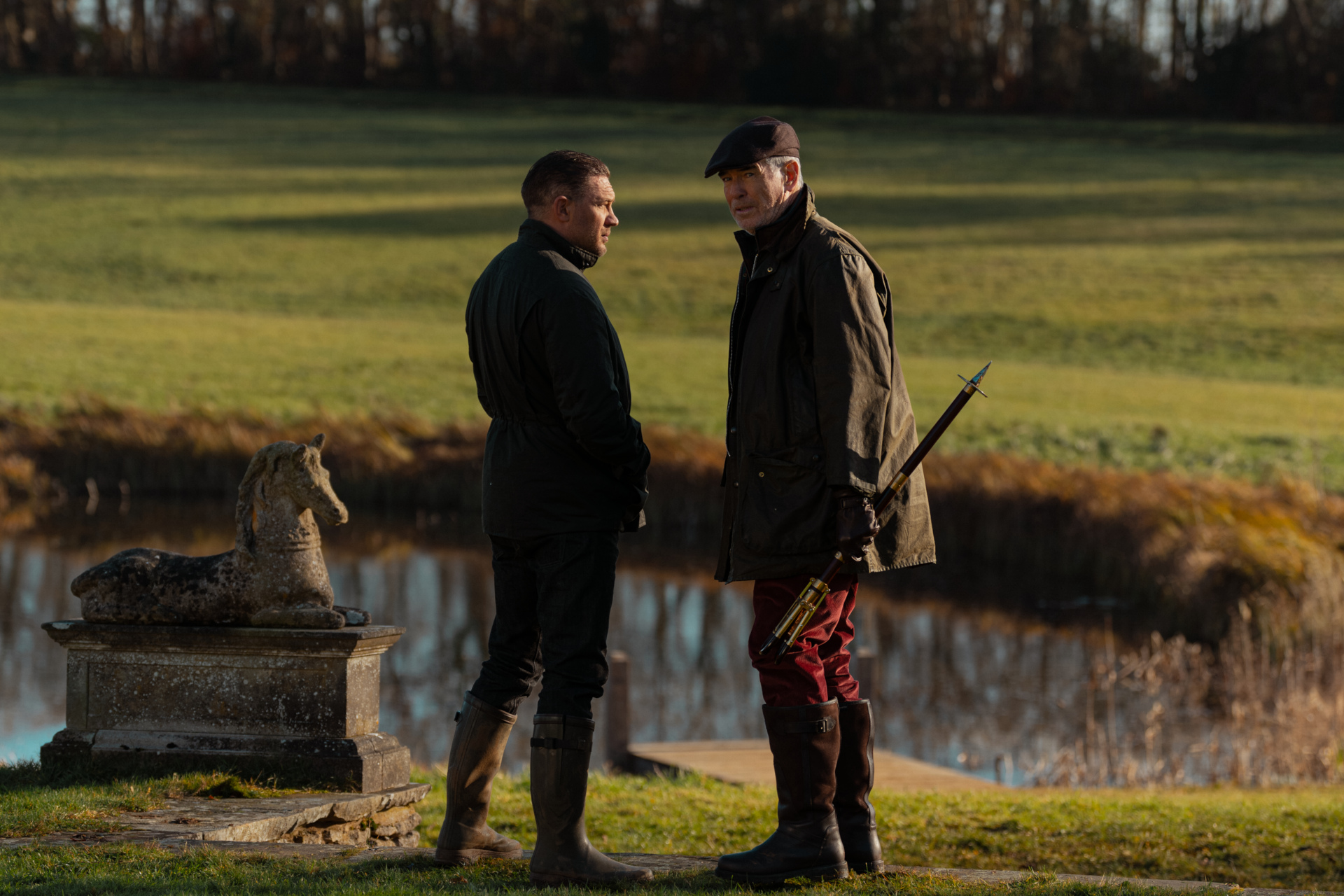
Tom Hardy as Harry Da Souza and Pierce Brosnan as Conrad Harrigan (c) Luke Varley/Paramount+
What was the planning process like?
So we always start with the script, as this gives away a lot of the clue we need to build up the look of the story’s characters. Both Ronan [Bennett, series creator] and Jez [Butterworth, executive producer] are very visual writers, so we were able to really dive straight in.
The next step is all about building the mood board; you start getting visuals, and then you can start building characters. And with Guy, he likes to have a moving mood board – so you curate all these pictures and videos, and you put it to music. It’s like once the music comes in, you’re really building a story for the costumes.
And when I get the set drawings and then the location pictures, I tend to make these little ‘mood boxes’. So I will make a box, almost like it’s a set, and then I will cut out cardboard figures of the characters in the clothes we want to use. I can sort of immerse everything in there, and get an idea of how it will work – because until it actually comes to fitting the actors and seeing them in a scene, you don’t know.
Can you talk us through your mood board?
I looked into famous gang families in London. This was a big starting point. You could tell from the way the script was written – the people in London, the famous buildings, the difference between east and west, north and south – that these kind of clashing areas and people sat at the centre of the MobLand story.
There’s a big divide between south and north – even as Londoner, I was very aware of that. But we didn’t want to fall into any clichés, and we wanted to created a different look than with Top Boy.
I was also brought up in north London – in Islington – where there were quite prominent, famous gangs, like the Adams Family [also known as the Clerkenwell Crime Syndicate]. A lot of my research looked into these gang, and what I actually found was that, interestingly, unlike the gangsters in 40s and 50s New York or 60s London, the more recent generations of gangs don’t want to get noticed. They don’t want their clothing to stand out.
They were still expensive, don’t get me wrong, but they didn’t stand out. They wouldn’t wear a Gucci bowling shirt, for example, because that is very noticeable. The only character that was probably the exception to this rule was Eddie – but he’s a younger, flashier character anyway.
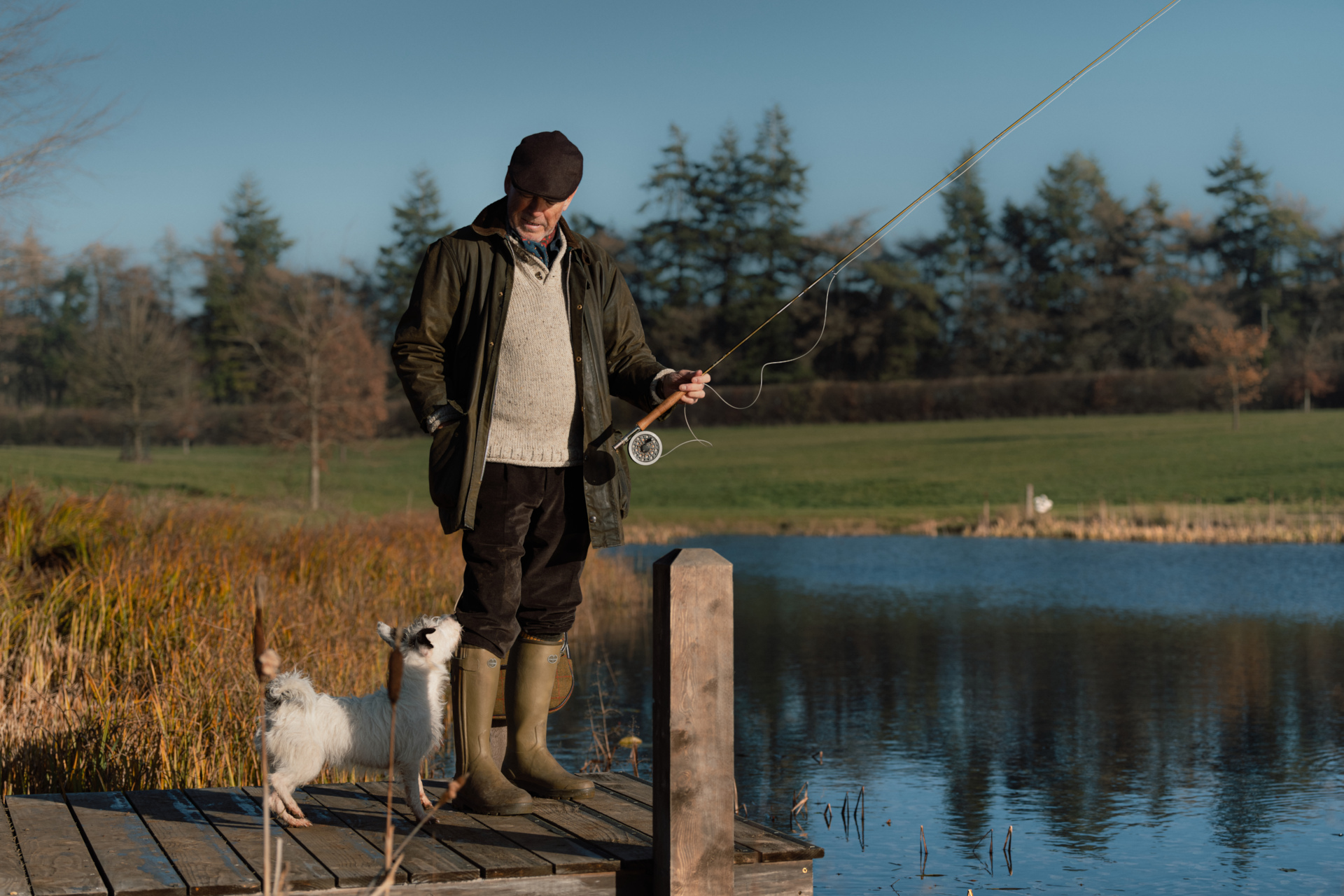
Pierce Brosnan as Conrad Harrigan (c) Luke Varley/Paramount+
And was there lots of room for collaboration with the show’s creators?
Yes, definitely. It was really interesting too, because Ronan would take a more realistic approach, but he was fully on board with Guy’s vision.
Guy was quite specific in the sense that he didn’t want it to look like The Gentleman, so we had to sort of build from another area. The big thing was that it had to look believable – from the cars people drove and the clothes they wore to the sets and locations they inhabited.
Talk us through what it was like to build the wardrobe for Conrad Harrigan [Pierce Brosnan].
With Pierce, I really wanted to build a wardrobe that contained brands that weren’t really obvious to a London – one, because he has moved to the Cotswolds, and two because his roots are in Ireland.
I ended up getting really frustrated one day, and just thought, ‘That’s it, I’m going to drive to Cheltenham, because that’s where those types live.’ On that trip, I found some very interesting, authentic men’s outfitters that were much more classic. Dubarry of Ireland was a big one, for example.
For his more ‘business facing’ attire, we also dressed him in Anglo Italian tailoring, as well as high end labels like Ralph Lauren.
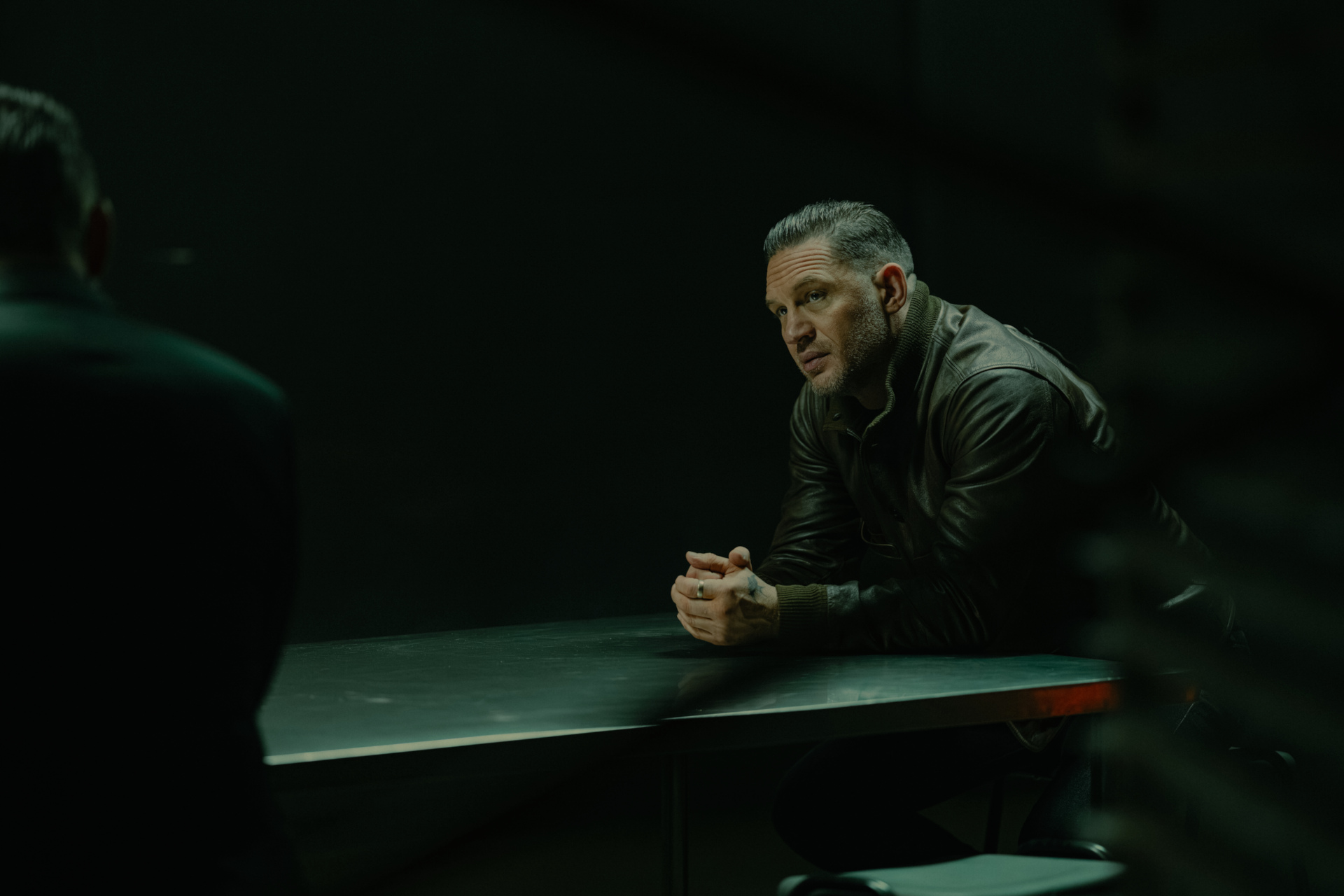
Tom Hardy as Harry Da Souza (c) Luke Varley/Paramount+
And what about Harry [Tom Hardy], aka ‘the fixer’?
Tom came on board quite late, and when talking to him he kind of emphasised that everything about Harry is not meant to provoke – including his clothes.
On my mood board, I had put Steve McQueen in Bullitt and another shot of Daniel Craig in Barbour. Tom said he was leaning more towards that second look, because his character would possibly have relationships with military people in the SAS – the Hereford Boys.
Another thing he said to me is that he’d be defined by his footwear. He wanted to wear the Salomon shoes, which help muffle your footsteps; nobody knows when he’s coming. There was definitely a physicality to what he wore; it was function over aesthetic.
He still wanted to look good, though. We looked at Barbour silhouettes, but then we settled on a custom designed wax jacket. He also wore a shearling jacket made by Dunhill.
You could tell it was all expensive, but it didn’t really stand out. Nothing was obviously branded. It had to be something that he could wear to talk to a dodgy fentanyl seller, and then to a bar at The Ritz. It had to be very minimal.
Maeve Conrad [Helen Mirren] is another character with her own distinct look – what was it like to work on her wardrobe?
She was an interesting one, as she probably never left the house at all. She had people come in and deliver food and what have you. But this meant that her outfits never related to her surroundings at all. She’s the opposite to the type of women you might see in Cheltenham – she’s not part of this group at all. Maeve wanted to have this Lady Macbeth feel to her, and she just wore all black.
I’m used to designing clothes that are more out there – I worked on AbFab a few years back – but for this, I think I wanted the audience to sort of not notice the clothes, but then take a second look and think, ‘Oh wow, that’s interesting.’ I wanted the clothed to help tell the story without getting in the way of the acting and the plot playing out onscreen.
For example, with Helen, she has a piece of jewellery – a necklace – that she wears with everything. And this harks back to her Irish roots, her Catholicism. She also wears a nice watch, but that is the only piece of clothing really, that gives any indication that she’s wearing very expensive clothes.
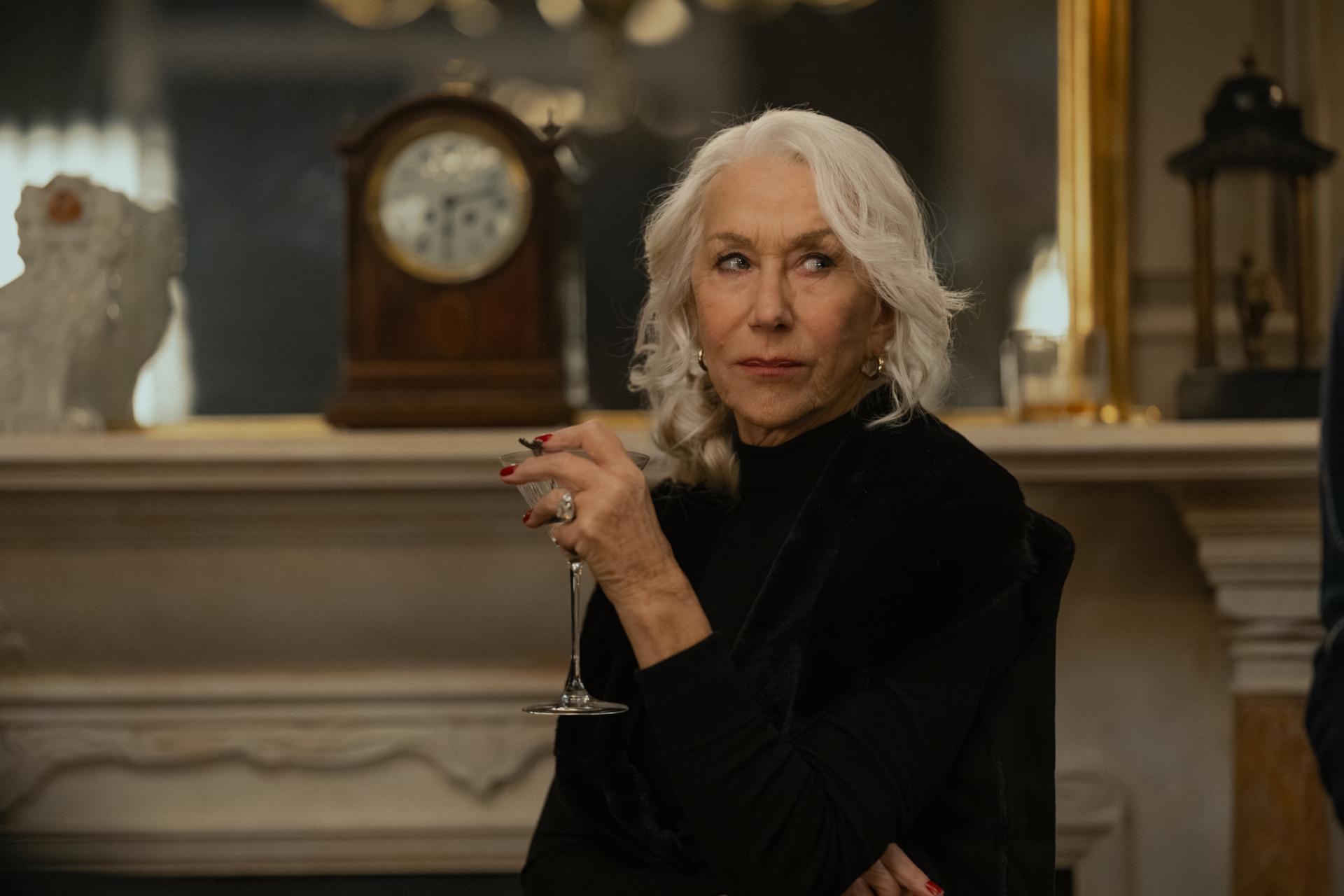
Helen Mirren as Maeve Harrigan (c) Luke Varley/Paramount+
So accessories play a big role in highlighting the traits of each character?
Yes – especially the watches. The watches tell a story. The type of watch that Eddie [Anson Boon] wears is a Hublot. It’s a bit more out there. It’s a bit brash, it’s a bit show-off-y. Whereas Conrad, Maeve and Tom have gone for absolute classics – what everyone would wear. They just don’t want to be noticed.
Speaking of Eddie, he’s a very different character from the others, isn’t he?
He’s a London kid. Very entitled [laughs]. One of those kids that have more money than sense, who wants to wear a designer version of something. It’s going to be expensive, and he wants to wear expensive.
Anson is also a dream to dress. He gets very involved in his character and the clothes. We had a couple of day where we went shopping together, and we built the character from there.
Aspesi was really good for his character – that was the suit Eddie first wears in the club. He also wears Casablanca, Burberry, McQueen, all those high-end brands.
Everyone else doesn’t want to get noticed, but Eddie is wearing these ridiculous designer jacket, he’s getting into trouble and he’s wearing rose tinted glasses through it all. He just looks absurd, and his outfits make it easier to wind up the other characters.
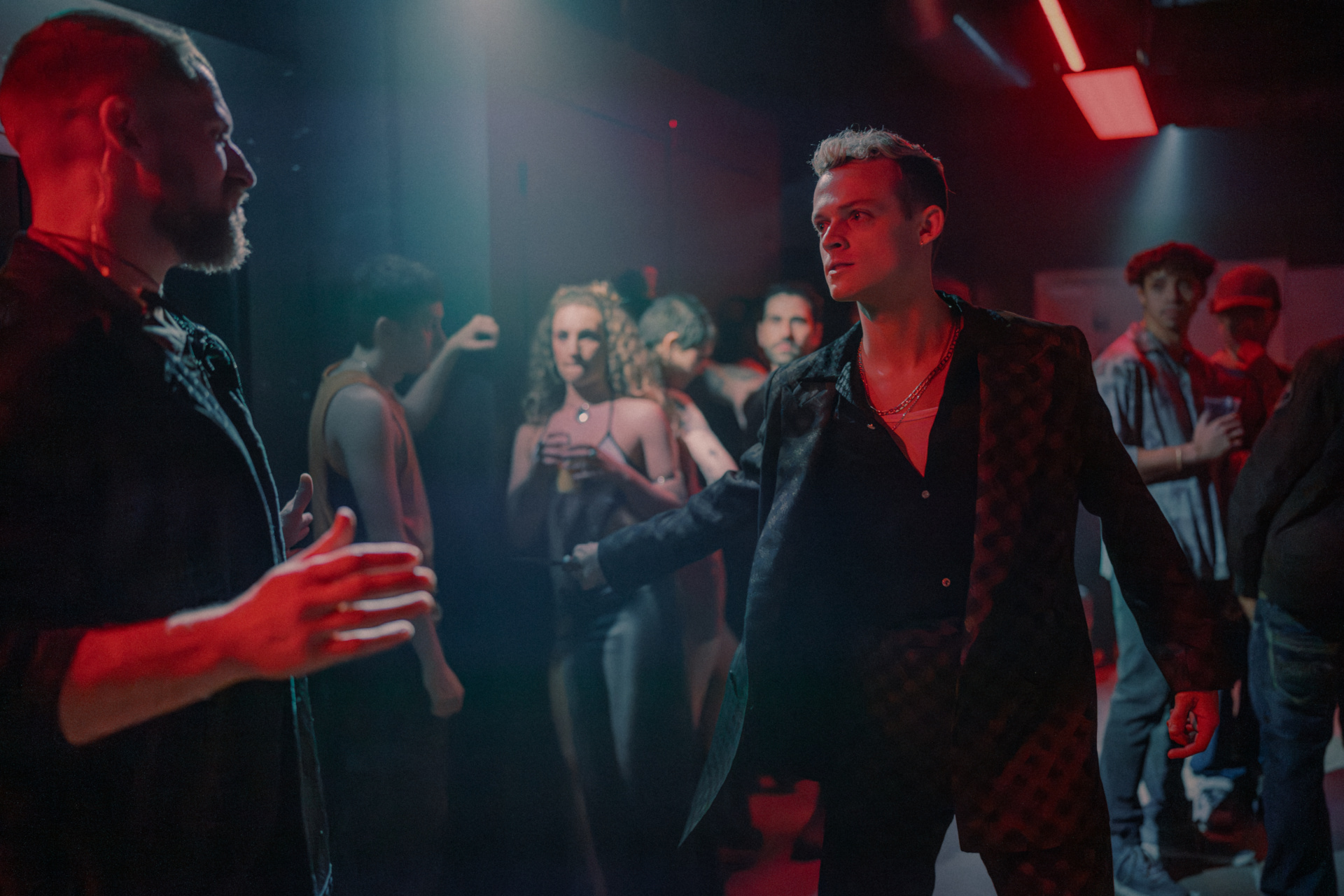
Anson Boon as Eddie Harrigan (c) Luke Varley/Paramount+
Were there any other characters you particularly enjoyed dressing?
There’s the Stephenson family. I had great fun with Vron [Annie Cooper], and I’d love to have done more with her and Richie [Geoff Bell], because they are really verging on the side of tacky, and it would have been fabulous to explore that.
She’s quite south London – a little The Only Way Is Essex bridge and tunnel. You know, she does a lot of work on her body, and her style is a bit tacky (and it’s always fun to do tacky clothes). Annie was fully on board, and so was Geoff. He was fantastic to dress.
The obvious thing was to put them in track suits – but again, there’s been a lot of tracksuits in Guy Ritchie’s catalogue, so we had to steer away from that and just look up really bad colours, nasty-looking shoes (crocodile shoes!), horrible belts, awful shirts and very dated cardigans. Things were quite graphic with the Stephenson family.
And for those who fancy trying on the look: what would a Harrigan capsule wardrobe look like?
Well, if we’re talking about Conrad in the country, it would be a really beautiful pair of moleskin trousers or beautiful pair of corduroys from Purdey. He would have a really great jumper from Dubarry, a Barbour jacket, and then a long fishing coat from Purdey as well – probably teamed up with knitwear from Connolly or Drake’s.
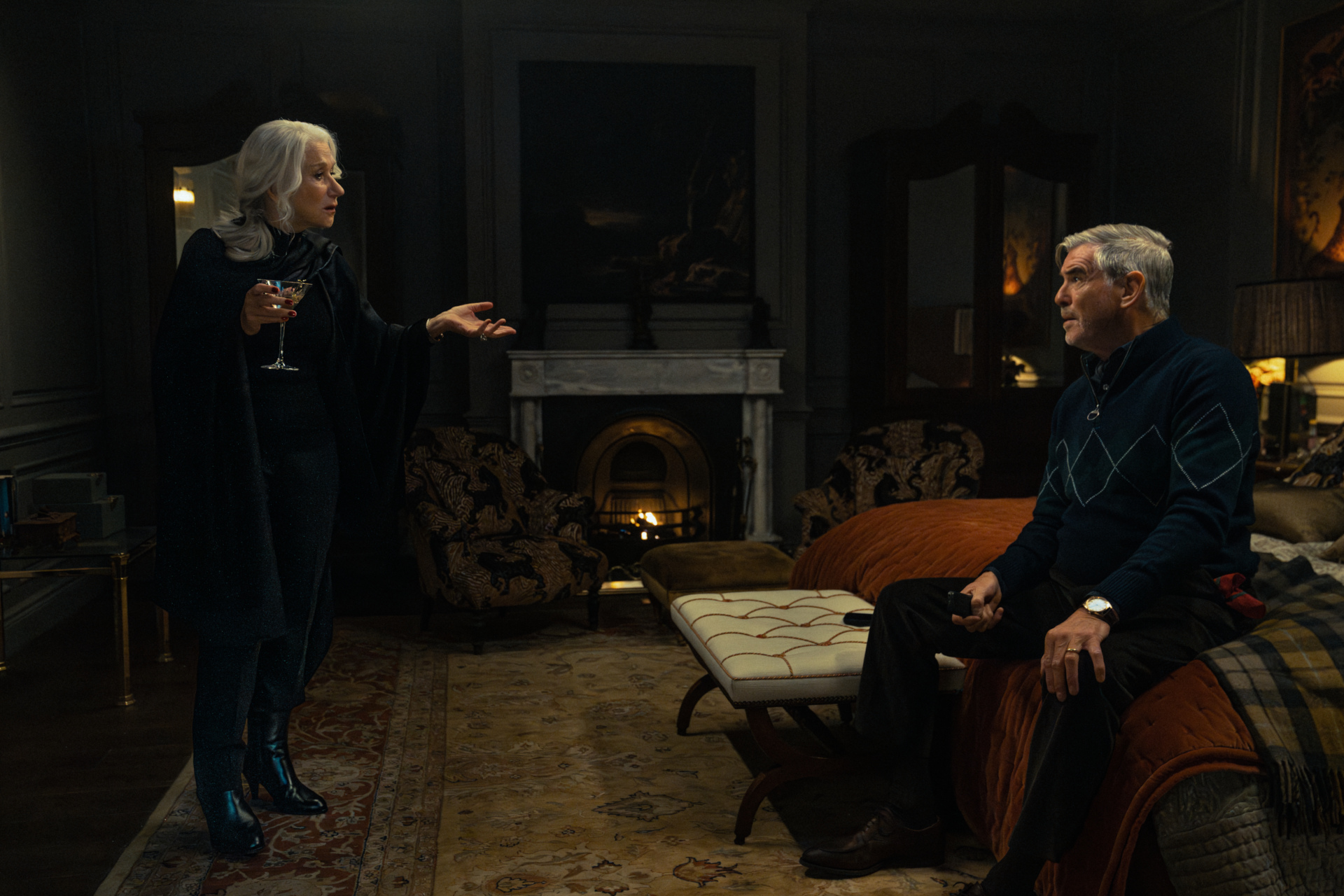
Helen Mirren as Maeve Harrigan and Pierce Brosnan as Conrad Harrigan (c) Luke Varley/Paramount+
Maeve, however, is a bit more rogue. She would wear a fabulous silk shirt from Dolce Gabbana. She’d have cashmere from Connolly and classic Amani trousers. Maybe some kind of Barbour, as well as some Penelope Chilvers boots.
The only stand-out might be Seraphina [Mandeep Dhillon]. She’s London-based, and wears a lot of Victoria Beckham, GANNI and Alexander McQueen. All high-fashion pieces, but nothing flashy. Her wardrobe link to the family though is that she wears scarves by Claire Haggis, a designer based in Cheltenham.
I also see all of the family wearing Le Chameau boots when in the countryside; they’d all be lined up in the boot room.
WATCH
You can stream MobLand on Paramount+. New episodes land weekly on Sundays. paramountplus.com

